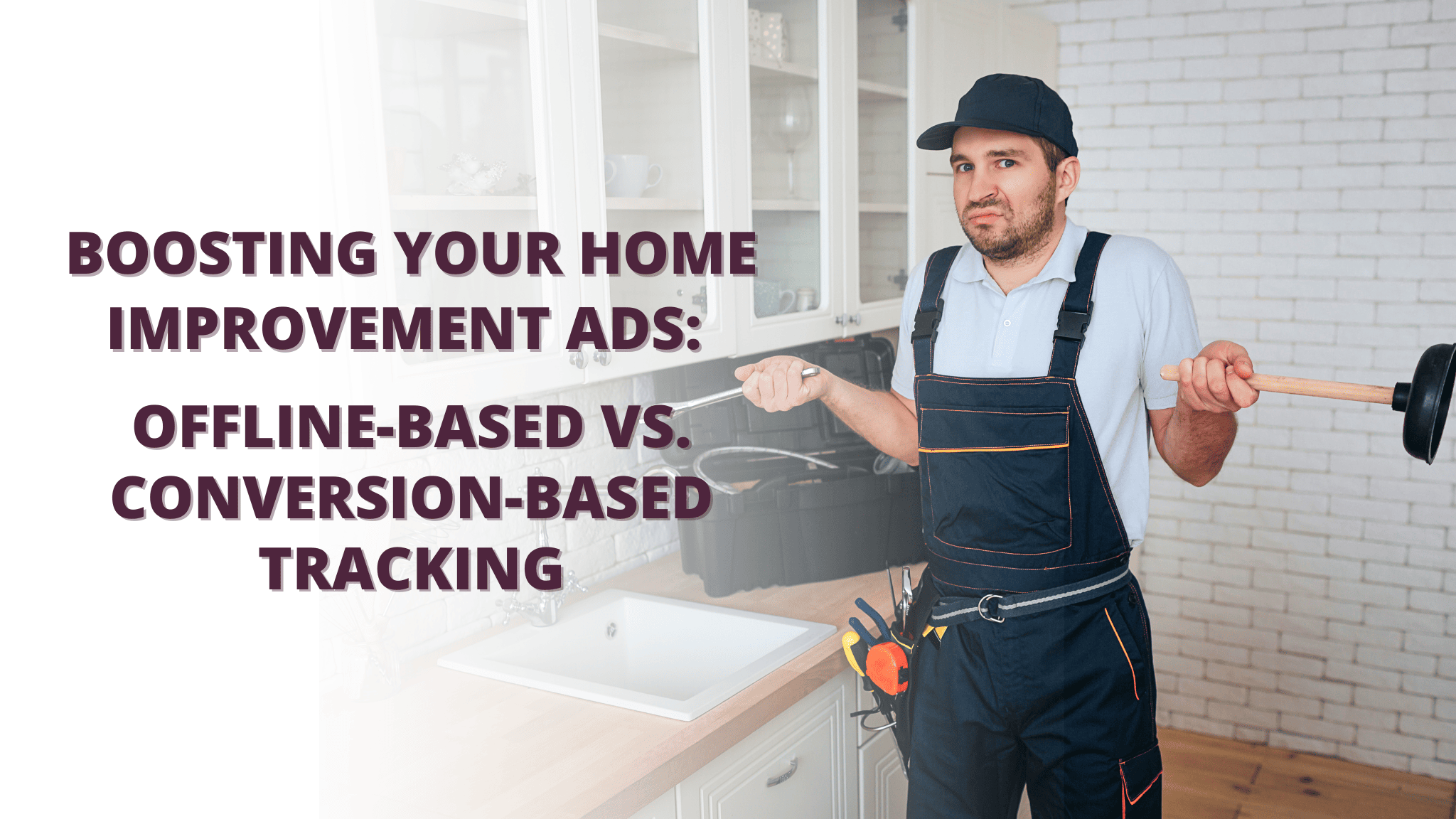Which is Better for Home Improvement Businesses: Offline-Based vs. Conversion-Based Tracking

Today, we're diving into the pros and cons of offline-based tracking and conversion-based tracking. These two powerful tools can supercharge your advertising efforts and bring in more leads. So, let's strap on our tool belts and explore the pros and cons of each method, along with some handy examples of when to use them.
Offline-Conversion Tracking:
Imagine this: you've just completed a stunning kitchen renovation, and you're eager to showcase your craftsmanship to potential clients. Offline conversion tracking is your trusty sidekick in this scenario. This approach measures the impact of your ads based on conversions that occur outside of your website, such as phone calls, in-person visits, or even completed projects.
Pros:
- Comprehensive Insight: Offline conversion tracking provides a more complete view of the customer journey, capturing interactions that happen beyond online clicks.
- Accurate Attribution: You can attribute conversions to specific ads or campaigns, helping you understand which strategies are driving real-world actions.
- Optimization of Local Campaigns: For businesses with a physical presence, offline conversion tracking can optimize local advertising efforts by showing which locations or regions generate the most conversions.
Cons:
- Data Integration Challenges: Implementing offline conversion tracking can be complex, as it often requires integration with Customer Relationship Management (CRM) systems or other data sources. This integration process might demand technical expertise or assistance, making it a potentially daunting task for businesses without a strong technical background.
- Attribution Challenges: Determining the exact source of offline conversions can be challenging. For instance, if a customer sees an ad online but visits your physical store to make a purchase, attributing the conversion accurately to the ad can be complex. This attribution difficulty might lead to inaccuracies in assessing the impact of specific campaigns.
- Delayed Feedback: Offline conversion tracking may result in a longer feedback loop. Gathering and processing offline conversion data, such as in-person visits or phone inquiries, can take time. As a result, you might not have immediate insights into the effectiveness of your campaigns and need to exercise patience while waiting for sufficient data to accumulate.
When to Use Offline Conversion Tracking?
Offline conversion tracking shines when your business relies heavily on in-person interactions or phone inquiries. It's especially effective for businesses with physical locations, such as home improvement stores or showrooms.
Conversion-Based Tracking:
Picture this: you're launching a limited-time offer on bathroom remodels, and you need to track every lead coming in. Enter conversion-based tracking, the nimble ninja of the advertising world. This method focuses on immediate actions taken by users, such as form submissions or phone calls.
Pros:
- Quick Feedback: Conversion-based tracking provides near-instantaneous feedback, allowing you to optimize your campaigns on the fly. If you're looking for immediate results, this method has got your back.
- Simplicity: Unlike value-based tracking, conversion-based tracking is relatively straightforward to set up and manage. You can start tracking conversions with minimal technical know-how.
- Easy Benchmarking: Conversion-based tracking enables you to compare the performance of different ads, keywords, or targeting options based on immediate results. It helps you identify winning strategies faster.
Cons:
- Short-Term Focus: Conversion-based tracking primarily measures immediate actions, which may not reflect the long-term value of a customer. This approach might overlook potential high-value leads that don't convert right away.
- Incomplete Picture: While conversion-based tracking tells you about immediate actions, it may not provide a comprehensive understanding of your overall marketing effectiveness. You might miss out on important insights into customer behavior.
- Neglecting Non-Digital Conversions: Conversion-based tracking is centered on online actions, such as website clicks and form submissions. It may not encompass other types of valuable conversions that don't happen online, like phone inquiries, store visits, or project completions. Ignoring these non-digital conversions can result in an incomplete understanding of your advertising's impact.
When to Use It:
Conversion-based tracking is your go-to when you're running time-sensitive promotions, launching new products or services, or testing different ad variations. It's perfect for capturing quick wins and getting rapid feedback on your campaigns.
Conclusion:
In summary, while both offline conversion tracking and conversion-based tracking offer valuable insights, they come with their own set of challenges. Offline conversion tracking might involve technical complexities and delayed feedback, while conversion-based tracking can lead to a short-term focus and incomplete data. To make an informed choice, you should carefully consider specific objectives, resources, timeline, and the type of interactions you value most within the context of home improvement advertising.
If you're finding it challenging to navigate the world of offline-based and conversion-based tracking, our expert team of Google Ads media buyers is here to help. Feel free to consult with us for tailored strategies specific to your home improvement business needs. Click this link to get started.